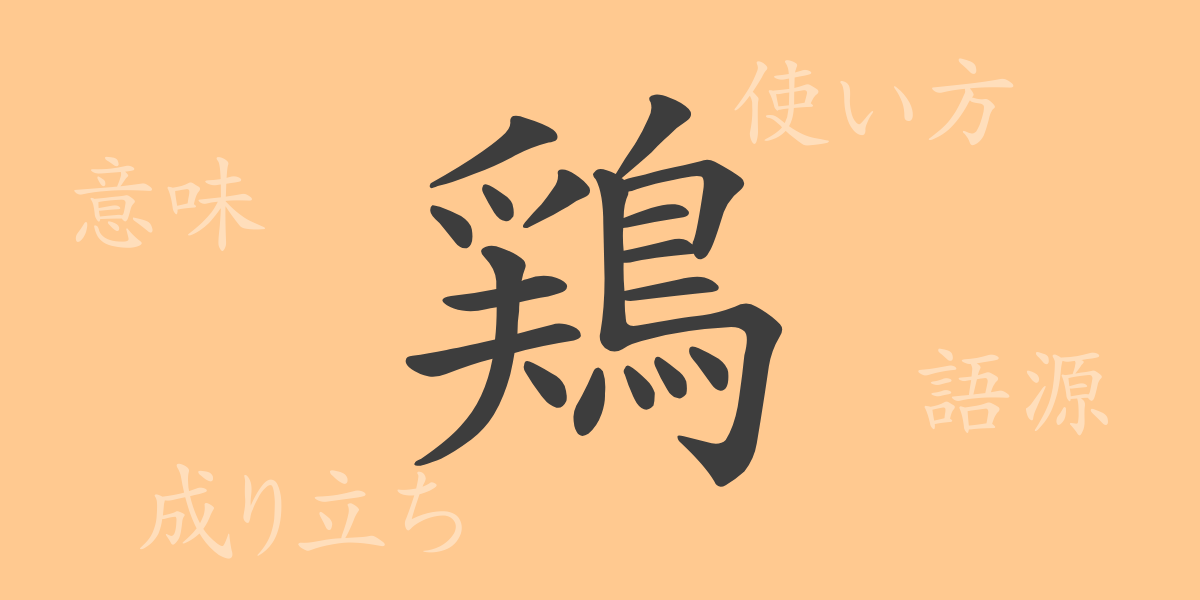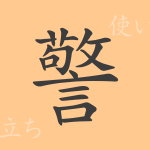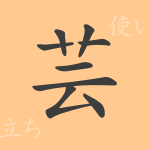As a symbol deeply rooted in Japanese culture and used in various expressions, the kanji “鶏(にわとり, niwatori)” plays an integral role in our lives, evident in our food culture and language. This article delves into the origin, meaning, usage, readings, and idioms associated with this fascinating character.
Origin of 鶏(にわとり, niwatori) (Etymology)
The kanji “鶏(にわとり, niwatori)” was originally used in ancient China to represent birds. Tracing its origins, it evolved to specifically refer to chickens, depicted through pictographs illustrating their sharp beaks and morning crowing habits. Over time, the character became more abstract, settling into its current form.
Meanings and Uses of 鶏(にわとり, niwatori)
The kanji “鶏(にわとり, niwatori)” specifically refers to chickens within the avian category. Chickens have been integral to human life for consumption, as pets, in sports (cockfighting), and even in divination since ancient times. The character is also prevalent in figurative expressions and idioms, showcasing the richness of the Japanese language.
Readings, Stroke Count, and Radical of 鶏(にわとり, niwatori)
The kanji “鶏(にわとり, niwatori)” has several readings in Japanese:
- Readings: The on’yomi (Chinese reading) is “ケイ(kei),” and the kun’yomi (Japanese readings) are “にわとり(niwatori)” and “とり(tori).”
- Stroke count: The character consists of 18 strokes.
- Radical: The radical is 鳥(とりへん, torihen), meaning “bird.”
Idioms, Expressions, and Proverbs Using 鶏(にわとり, niwatori)
Numerous idioms and proverbs feature the kanji “鶏(にわとり, niwatori),” reflecting the richness of Japanese expressions. For instance, “鶏口牛後(けいこうぎゅうご, keikougyuugo)” suggests that it is better to be the head of a chicken than the tail of a cow, meaning it’s preferable to lead a small group than to follow in a larger one. “鶏群の一鶴(けいぐんのいっかく, keigunnnoikkaku)” refers to an outstanding person among the mediocre. Another proverb, “鶏を割くに焉んぞ牛刀を用いん(にわとりをわくにいずくんぞぎゅうとうをもちいん, niwatoriwowakuniezukunzogyutouwomochiin),” teaches that one should not use excessive means for small matters.
Conclusion on 鶏(にわとり, niwatori)
The kanji “鶏(にわとり, niwatori)” goes beyond merely referring to a bird; it is deeply embedded in Japanese life, language, and culture. From culinary practices to linguistic expressions, the presence of “鶏(にわとり, niwatori)” is ubiquitous. Through this article, we hope you recognize its multifaceted charm and gain a deeper appreciation of the Japanese language’s depth.

























